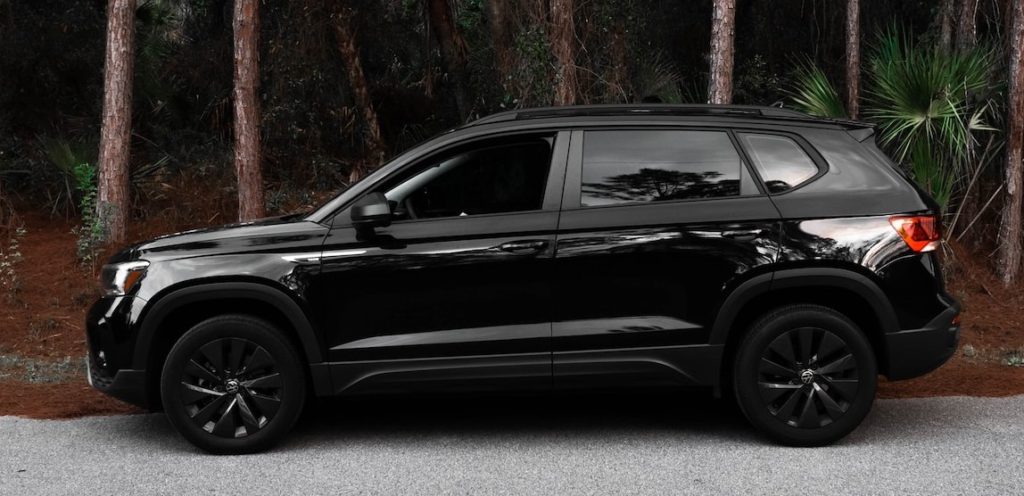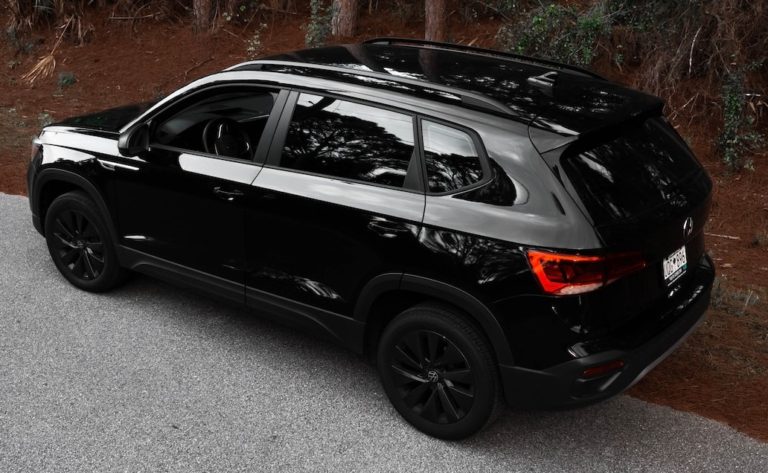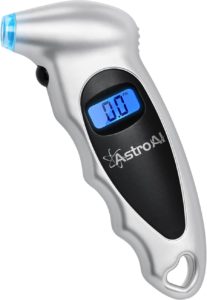Volkswagen Taos Tire Pressure Monitoring System Description
The indirect tire pressure monitoring system (TPMS) in the Volkswagen Taos is an essential safety feature designed to alert the driver about potential issues with tire pressure. The system utilizes its anti-lock braking system (ABS) and wheel speed sensors to monitor tire pressure by analyzing changes in wheel rotation speeds. The purpose of the TPMS is to ensure optimal tire performance, improve fuel efficiency, and maintain overall vehicle safety by helping the driver stay informed about tire pressure levels. Scroll down and keep reading to learn how to reset your VW Taos tire pressure light, when to reset it, and what causes it to turn on!
Volkswagen Taos Tire Pressure Light Reset Procedure:
Fill the tires to the recommended pressures. (found on the driver side door jamb, yellow sticker)
Turn the vehicle to the ON position or have the vehicle running.
Select the CAR button.
Select SETTINGS.
Select TIRES.
Select SET under “tire pressure monitoring system”.
Select CONFIRM.
Drive your Volkswagen Taos!
How Does the Volkswagen Taos Tire Pressure Monitoring System Work?
The Volkswagen Taos TPMS works by utilizing the vehicle’s existing systems and sensors to monitor tire pressure indirectly. Here’s a detailed breakdown of how it operates:
• Anti-lock Braking System (ABS): The TPMS relies on the ABS to assess wheel rotation speeds, as it is already equipped with wheel speed sensors.
• Wheel Speed Sensors: These sensors measure the rotation speed of each wheel and send the data to the vehicle’s onboard computer.
• Tire pressure variations: Changes in tire pressure affect the tire’s rolling circumference, which in turn impacts wheel rotation speeds.
• Onboard computer analysis: The vehicle’s onboard computer compares the wheel rotation speeds and detects any discrepancies that may indicate a change in tire pressure.
• Warning light activation: If the onboard computer identifies a significant difference in wheel rotation speeds, it will trigger a warning light on the dashboard to alert the driver of a potential tire pressure issue.
Basically, the Volkswagen Taos uses sensors that measure how fast each wheel is spinning and tells the car’s computer if something seems wrong. If there’s a problem, a warning light on the dashboard will let you know to check your tires.
What Happens when Tires are Underinflated?
When driving a Volkswagen Taos with underinflated tires, several negative consequences can occur. Firstly, underinflated tires have a larger contact area with the road, which leads to increased friction and resistance. This not only reduces fuel efficiency but also causes the tires to wear out faster, particularly on the outer edges. Additionally, underinflated tires struggle to maintain their shape, resulting in compromised handling and decreased overall stability. This makes the vehicle more challenging to control, especially during sharp turns or sudden maneuvers, and increases the risk of accidents. Furthermore, the extra strain on underinflated tires can cause them to overheat, potentially resulting in tire failure and even blowouts. In a nutshell, driving a Volkswagen Taos with underinflated tires can negatively impact performance, safety, and the lifespan of the tires.
What Causes a Low Tire Pressure Light in a Volkswagen Taos?
• Low tire pressure: When one or more tires don’t have enough air in them.
• Tire puncture: A leak caused by something sharp, like a nail, poking through the tire.
• Seasonal temperature changes: Cold weather can make tire pressure drop, often turning on tire pressure lights. This is the most common cause for tire pressure warning lights to turn on.
• Tire rotation: Putting tires in the wrong spot or using different size tires can cause issues.
• Wheel alignment problems: Wheels that aren’t aligned can mess with tire pressure monitoring.
• Faulty ABS sensor: A broken or not working ABS sensor can cause false tire pressure alerts.
• Bad wheel speed sensor: A damaged wheel speed sensor can make the tire warning lights come on.
• Tire replacement: Using new or different tires with mismatched sizes can create issues. We recommend always using OEM size tires.
• Damaged wheels: Wheels that are bent or cracked will impact tire pressure readings.
• Calibration needed: The TPMS might need to be reset after adjusting tire pressure. Sometimes a recalibration is just needed.
• Electrical issues: Problems with wires or connectors with the ABS or wheel speed sensors.
• Spare tire: Driving with a temporary spare tire or “donut” on the car.
• Dead vehicle battery: A car battery that has died and been replaced or has been recently jump-started.
When should you Recalibrate the TPMS in Volkswagen Taos?
• After inflating or adjusting tire pressure: To ensure accurate monitoring when tire pressures have been corrected.
• Following tire rotation: To account for any changes in wheel rotation speeds due to tire position.
• When replacing tires: To accommodate new or different tire sizes and their respective rolling circumferences.
• After wheel alignment: To re-establish accurate tire pressure monitoring based on the adjusted wheel positions.
• In case of seasonal temperature changes: To account for fluctuations in tire pressure caused by changes in ambient air temperature.
• After repairing or replacing a faulty ABS or wheel speed sensor: To ensure proper functioning of the TPMS following sensor repairs.
• If the TPMS warning light persists despite resolving tire pressure issues: To reset the system and eliminate potential false alerts.
• Manufacturer’s recommendation: When suggested by the vehicle’s maintenance schedule or owner’s manual.
• Major suspension work: Following any significant work on the vehicle’s suspension system.
TIP: Be sure to check all tire pressures before recalibrating the tire pressure system regardless of the reason or cause.
Volkswagen Taos Tire Maintenance
Always adjust tire pressure when the tires are cold! Temperature changes have a significant impact on tire pressure, as cold tires tend to have lower pressure due to contraction, while warm tires exhibit higher pressure because of expansion. Volkswagen’s recommended tire pressure values are based on measurements taken from cold tires. Inflating warm or hot tires could lead to over-inflation, raising the chances of a sudden tire blowout or accelerated tire tread wear. In short, remember to examine tire pressure when they’re cold, either before driving or after the car has been parked for an extended period.
Please note that this blog post contains Amazon affiliate links. This means that if you make a purchase through one of these links, the author of the blog may earn a small commission at no extra cost to you. The author only recommends products that they personally use and believe in. Thank you for supporting this blog.



